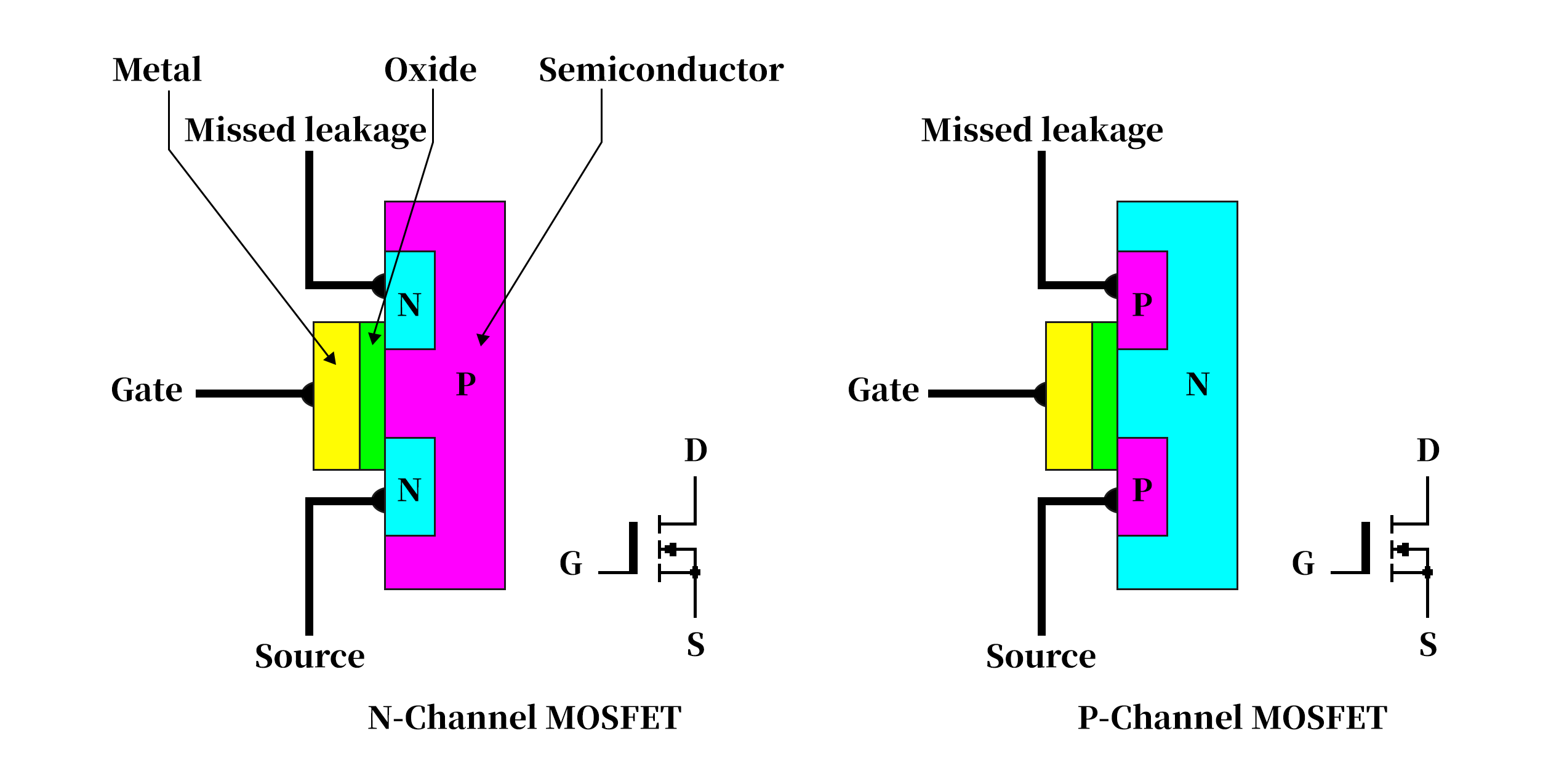Working Principle of MOSFET
1. Introduction
A MOSFET (Metal-Oxide-Semiconductor Field-Effect Transistor) is a field-effect transistor widely used in modern electronic circuits. It controls the switching of current by forming or blocking a conductive channel through the application of an electric field. MOSFETs feature high control efficiency, low power consumption, and fast switching speed, making them indispensable in both digital and analog systems.
2. Structure
A MOSFET typically consists of the following parts:
Gate: A metal or polysilicon electrode insulated from the semiconductor by a dielectric layer (usually silicon dioxide, SiO₂).
Source and Drain: Two heavily doped N-type regions embedded within a P-type semiconductor substrate.
Body (Substrate): Normally a P-type semiconductor. In most circuit designs, the body is shorted to the source to maintain a fixed potential and reduce body effect interference.

3. Operating Principle
The MOSFET operates by controlling whether a conductive channel forms between the source and drain, depending on the gate voltage.
3.1 Off State
When the gate voltage is 0 V or lower than the threshold voltage (Vth):
No conductive channel is formed on the surface of the P-type substrate.
A high impedance exists between the source and drain, resulting in almost no current flow.
The MOSFET is in the "off" state, functioning like an open switch.
3.2 On State
When the gate voltage (VGS) exceeds the threshold voltage(VGS > Vth):
A vertical electric field forms under the gate dielectric layer.
This field attracts electrons from the P-type substrate to the semiconductor surface and repels holes, creating an N-type inversion layer.
This conductive channel connects the source and drain, allowing current to flow from the drain to the source (according to conventional current direction).
4. Key Characteristics
MOSFETs exhibit the following electrical characteristics:
Voltage-Controlled Device: The current is regulated by gate voltage, and due to the insulating gate oxide, almost no gate current flows, resulting in ultra-low static power consumption.
Fast Switching Speed: Ideal for high-frequency circuits, including RF and digital switching.
Low Power Dissipation: Power is consumed only during switching transitions, making MOSFETs suitable for portable and energy-efficient systems.
5. Applications
MOSFETs are commonly used in the following areas:
Digital Circuits: Serve as switches in logic gates, flip-flops, and transistors in CPUs.
Analog Circuits: Function as voltage amplifiers, source followers, and current regulators.
Power Management: Employed in DC-DC converters, power switches, and motor control circuits.
6. Summary
The core function of a MOSFET is to control current flow using an electric field. By applying voltage to the gate, a temporary conductive channel is induced on the surface of the semiconductor, thereby enabling or disabling current conduction. This mechanism gives the MOSFET its excellent responsiveness, low power consumption, and wide applicability in modern electronic and power devices.

